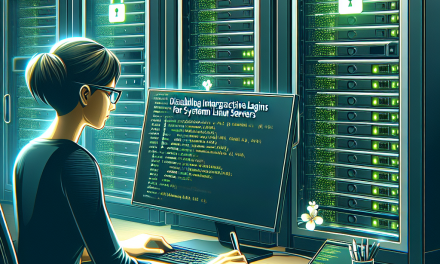In the world of Linux, having root access is both a powerful asset and a potential security risk. While root privileges allow users to perform any operations on the server, mishandling them can lead to catastrophic results, from accidental data loss to severe security vulnerabilities. This is where sudo (short for "superuser do") comes in handy. In this article, we will explore the importance of sudo, how to configure it securely, and best practices for protecting your Linux server.
Understanding Sudo
The sudo command allows users to run programs with the security privileges of another user, usually the superuser or root. By granting temporary elevated permissions, sudo minimizes the risks associated with having multiple users operate as the root user. With sudo, you can execute commands with superuser privileges while logging each command for audit purposes, providing both accountability and traceability.
Why Use Sudo?
- Enhanced Security: Sudo limits root access to only those who need it.
- Accountability: Sudo logs every command executed with elevated privileges, so you can trace actions back to specific users.
- Preventing Accidental Damage: Users operate with limited permissions most of the time, reducing the risk of accidental system changes.
Configuring Sudo
To get started with sudo, you need to ensure it’s installed on your system. Most Linux distributions come with sudo pre-installed. If it’s not, you can install it using your package manager:
bash
sudo apt-get install sudo
sudo yum install sudo
Adding Users to the Sudoers File
The main configuration for sudo is found in the /etc/sudoers file. It’s critical to edit this file safely; never edit it directly with a text editor. Instead, use the visudo command, which provides syntax checking to prevent errors.
To add a user to the sudoers file, follow these steps:
-
Open the terminal and type:
bash
sudo visudo -
Add a line toward the end of the file as follows:
username ALL=(ALL) ALL
Replace
usernamewith the actual username you want to grant sudo access to. - Save and exit the editor.
Configuring NOPASSWD Option
For certain administrative scripts or applications that require non-interactive sudo usage, you can adjust permissions with the NOPASSWD option. This allows specific commands to be run without a password prompt.
Example entry in the sudoers file:
username ALL=(ALL) NOPASSWD: /path/to/command
Be cautious with this; overusing NOPASSWD can lead to security vulnerabilities.
Best Practices for Managing Sudo
- Limit Sudo Access: Only give sudo access to trusted users and roles that absolutely need it.
-
Use the Least Privilege Principle: Allow users to execute only the commands they need. For example, instead of permitting all commands, specify certain applications or scripts:
username ALL=(ALL) /usr/bin/systemctl, /usr/bin/apt-get
- Regularly Review Sudoers File: Keep track of who has sudo access and review it periodically to remove unnecessary privileges.
- Implement a Strong Password Policy: Ensure that all users with sudo access have strong, unique passwords.
- Monitor Sudo Logs: Keep an eye on
/var/log/auth.logor/var/log/securefor monitoring sudo usage.
Conclusion
sudo is an indispensable tool for Linux administrators, enabling controlled access to root capabilities while improving system security and accountability. By following the best practices outlined in this article, you can master sudo and significantly enhance the security posture of your Linux server.
As cyber threats continue to evolve, understanding and utilizing tools like sudo is critical in ensuring the integrity and security of your infrastructure. For more tips on Linux security and server management, stay tuned to WafaTech Blog!





